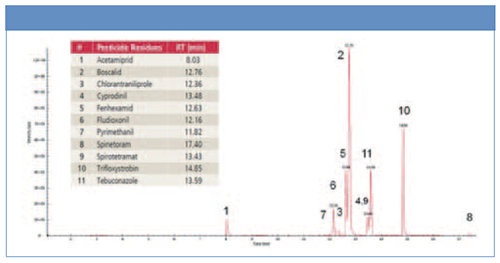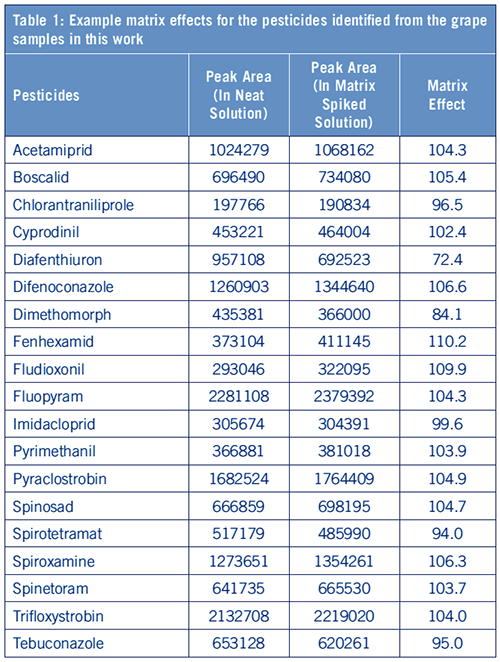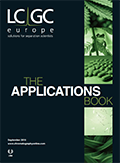Analysis of 213 Pesticide Residues in Grapes by LC–MS/MS with Time-Managed MRM
In this study, a fast, sensitive, and selective multiresidue method has been developed by coupling QuEChERS sample preparation with LC–MS/MS. Using time-managed-MRM™ in the QSight® triple quadrupole mass spectrometer, the optimum dwell time can be generated automatically for MRM transitions based on the number of coeluting transitions, expected cycle time, retention time, and tolerance time window of the targeted analytes. Such method automation results in improved data quality and better sensitivity, accuracy, and reproducibility, as demonstrated in this study by the results of 213 pesticide residues analyzed in grape samples.
The grape crop is one of the most important fruit crops consumed in the world. Grapes are consumed both as fresh and as processed products, such as wine, jam, juice, jelly, grape seed extract, raisins, vinegar, and grape seed oil. A large variety of pesticides are used in grape production throughout its growing season to control pests and diseases in vineyards and to increase crop yield. Pesticide residue is a major concern for the stakeholders of the grape industry, due to more and more stringent regulations and safety standards in most countries. It is also a concern for the general consumers, due to increased demand for safer products. Therefore, to prevent health risks, it is important to monitor the presence of pesticides and regulate their levels in grapes.
In this study, a fast, sensitive, and selective multiresidue method has been developed by coupling QuEChERS sample preparation with LC–MS/MS. Using time-managed-MRM™ in the QSight® triple quadrupole mass spectrometer, the optimum dwell time can be generated automatically for MRM transitions based on the number of coeluting transitions, expected cycle time, retention time, and tolerance time window of the targeted analytes. Such method automation results in improved data quality and better sensitivity, accuracy, and reproducibility, as demonstrated in this study by the results of 213 pesticide residues analyzed in grape samples.

Experimental
Hardware and Software: The chromatographic separation was performed by a PerkinElmer® UHPLC system and detection was achieved using a PerkinElmer QSight 220 triple quadrupole mass spectrometer, equipped with both ESI and APCI ionization sources. All instrument control, data acquisition, and data processing were performed using the Simplicity™ 3Q software.
Organic and non-organic grape samples were obtained from local grocery stores in Ontario, Canada. The mixed pesticide standards were obtained from ULTRA Scientific®. The samples were prepared using Supra-d QuEChERS kits (AOAC 2007.01 method).

Conclusion
An LC–MS/MS method for multiresidue pesticides analysis in grapes was developed by coupling a UHPLC system to a QSight 220 triple quadrupole mass spectrometer. This method can be applied for the determination of pesticide residues in grapes, with LOQs well below the limits set by regulatory boards.
The same LC–MS/MS method has also been applied successfully to other fruit analyses, such as berries, orange, and grapefruit, all with good performance. These results demonstrated the method’s applicability and effectiveness in detecting and quantifying pesticide residues in fruit samples.

PerkinElmer
710 Bridgeport Ave, Shelton, Connecticut 06484, USA
Website: www.perkinelmer.com


.png&w=3840&q=75)

.png&w=3840&q=75)



.png&w=3840&q=75)



.png&w=3840&q=75)








